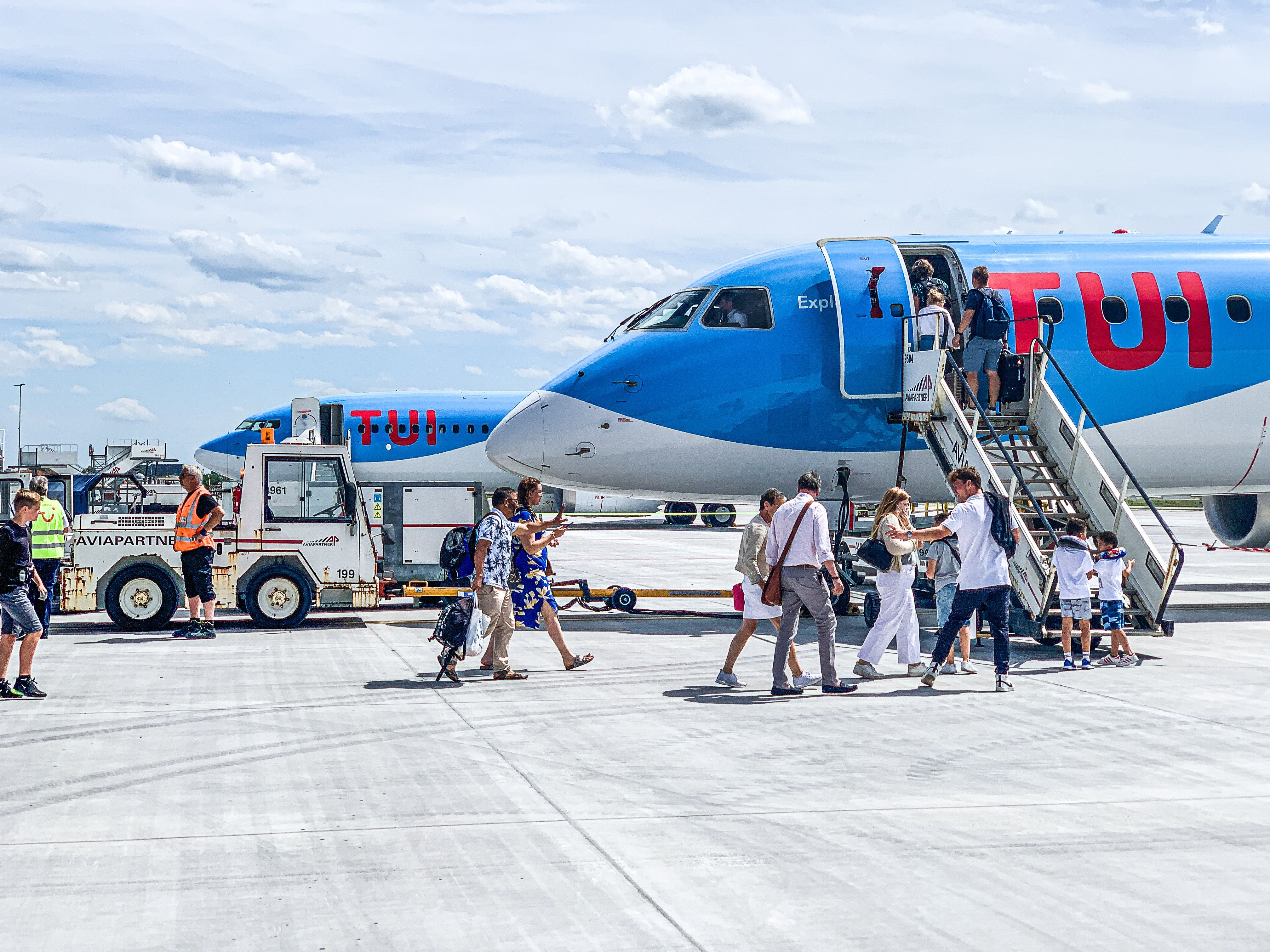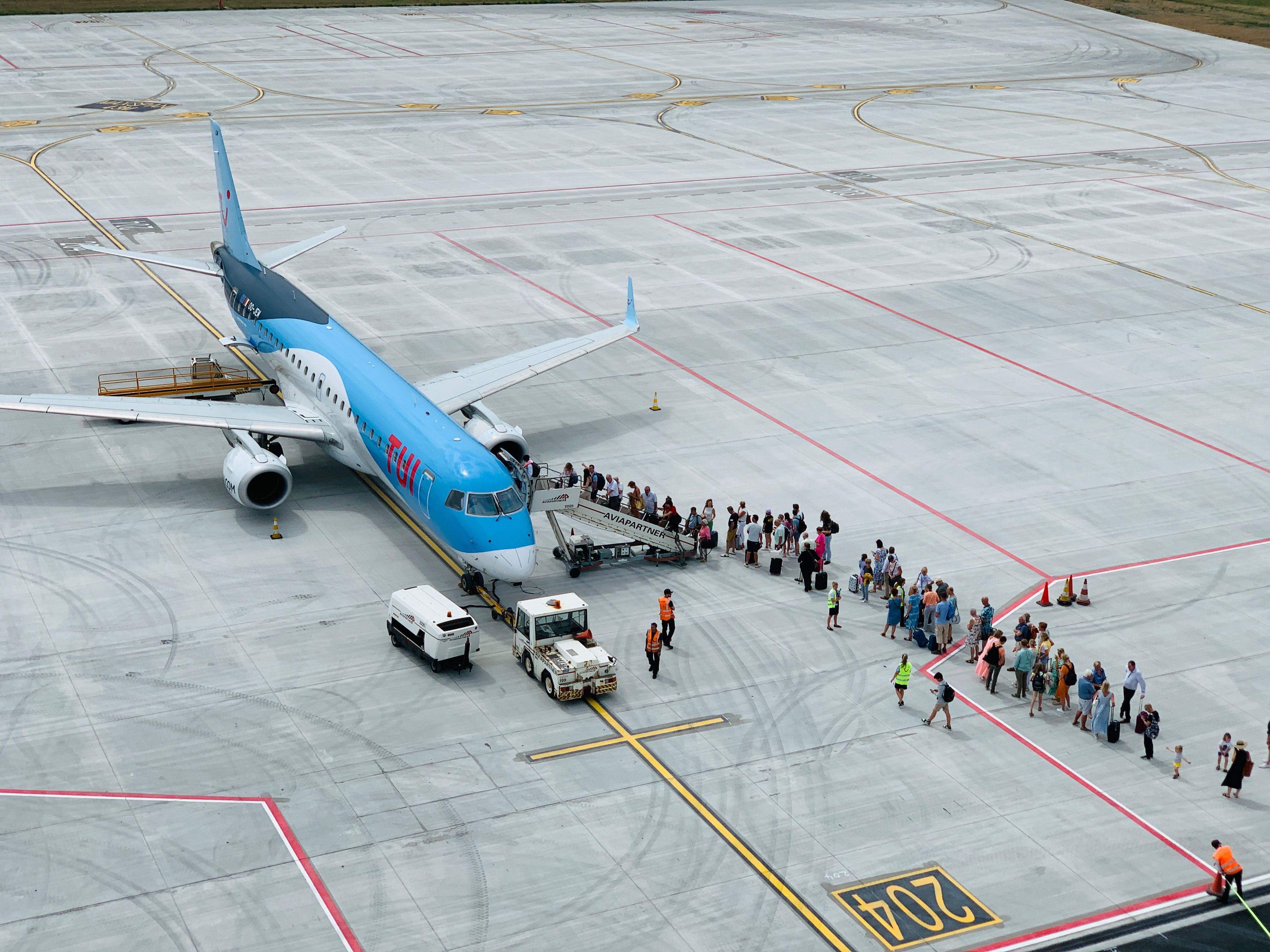Air traffic at Belgium's Ostend-Bruges International Airport is about to get busier and undisrupted as essential infrastructural works have finally been completed. Commissioned by the LOM Flanders at a cost of €12.4 million ($12.42m), the entire 160,000 square feet of the airport's aircraft parking lot in front of the passenger terminal was renewed in time to allow the airport to welcome more passengers.
Known as 'Apron 2', this is now the airport's largest aircraft parking area and is used to handle cargo and passenger flights. After excavating the foundation level and receiving a new concrete pavement, the service road on the apron also received a new layer of asphalt. All the sewers under the aircraft parking lot were also renewed.
Since the existing infrastructure was renovated, the works will only contribute to the lifespan, adding another 40 years and not increasing the airport's capacity. Bruno De Saegher, chairman of the LOM Vlaanderen, said:
"This is an important step for this airport, these works were necessary to continue to guarantee the safety of air traffic in the future."
Progress of the works
From an organizational point of view, the renovation of the aircraft parking area was not straightforward, as the airport remained fully operational during the construction. The project started last year in April and took place in two major phases. During the first phase, the eastern part of the aircraft parking lot, including the foundation, was broken up, and the western part remained in use for air traffic.
After the construction of the sub-foundation, which was in crushed concrete rubble, and the foundation which lay in lean concrete, two concrete layers totaling 30 centimeters thick were poured on top of each other. The extra layers were essential to ensure the bearing capacity for heavier aircraft types. Then in January this year, the second phase started by tackling the west part, and aircraft could use the renovated eastern part of the apron.
Stay informed: Sign up for our daily and weekly aviation news digests.
With both phases of the renovation done and dusted, the entire project was completed after just over a year. The Mayor of Ostend, Bart Tommelein, said:
"The airport is a great asset for Ostend. The renewed Apron 2 is the largest aircraft parking and is used for both passenger and cargo flights. The renovation was necessary for the sustainable growth of the airport. The City will continue to support the airport in its further development as an economic hub for all kinds of related and innovative activities."
During the renovation works, exciting discoveries were made as several projectiles from World War II were found. The missiles were removed safely, and the DOVO demining service consistently cleared the site several times for utmost safety, ensuring that the airport and crew were never in danger.
Attention to sustainability
While finding old war projectiles might seem exciting and scary, the renovation had yet another interesting fact. Aiding in its emphasis on sustainability, the renovation reused and recycled concrete from the old surface, and a temporary concrete plant was built on the airport site. By recycling the old paving on site, not only was unnecessary dumping of concrete waste greatly avoided but emissions from the driving of trucks were also reduced.
After the old pavement was recycled, it was reused for the underpinning and foundation of the renovated apron. During the renovation, the infrastructure for an electrical connection was also provided on several stands, meaning that aircraft are no longer required to use their power generators when parked, reducing overall carbon emissions and fuel consumption for airlines.


.png)
